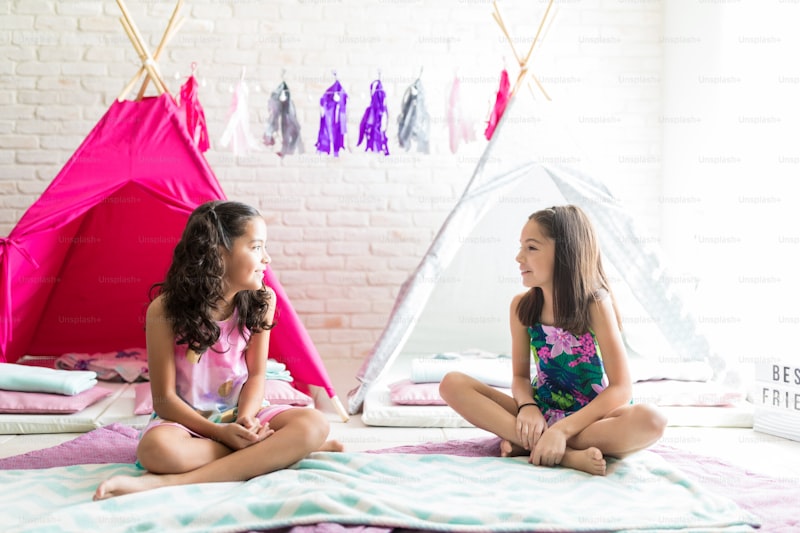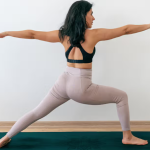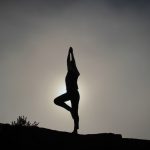There is a bridge, usually found between the ages of eight and twelve that leads from childhood into adolescence. This is a time of great physical change and a time of growing self-awareness. At this age, children are more aware of where they fit within a group and how they are perceived. With the many distractions and influences surrounding these young people it is easy to lose sight of who and what they are.
My mini yoga participants, those between the ages of three and seven want to engage their imaginations as they stretch, but with this older group, the practice, whilst maintaining the element of fun, needs to be more formal and have a greater goal — that of body awareness.
1. Help Them Discover Themselves
Developing a yoga practice between the ages of eight and twelve gives an opportunity to cultivate the idea of self-exploration in order to claim one’s body and personality. This is a positive act in the face of growing influences – influences that could potentially distort self-belief. When your body starts to change it can lead to a lot of negative feelings towards yourself, and yoga can help counteract that!
Yoga works its magic to bolster self-belief.
So it is very significant for this age group.
2. Foster Body Awareness
Coordination and balance are two powerful techniques for a young person discover their body. They are, for me, about letting go of inhibitions despite being in a room full of peers, and giving something new a go. The nature of balances is such that you rarely succeed at the first attempt; you have to keep on trying until something sticks.
Yoga is a cumulative practice and it takes work to achieve a posture or find balance.
But when it does happen, it is pure joy to experience and to witness.
3. Positive Influences
I also make sure that at this stage, praise is forthcoming. They need it and they feed off it. When they hear that their efforts are noted, they dig deeper. In response I tend to challenge them further. They begin to enjoy the harder postures and they begin to take their rightful space. In other words, they begin to experience how powerful their bodies are which in turn improves their posture, strength and awareness.
Giving them a sense of achievement and empowerment.
So encouraging.
4. Defining Self-Expression
At times, home and school life become challenging. This can often create conflict when preteens feel that they are not able to communicate freely or feel that they are not being heard. In order to encourage self-expression and open communication I like to create some time and space for discussion. Whether spending time chatting one on one after class, or during class within a group environment, I encourage them to express themselves so that they can learn how to share their thoughts and feelings.
Yoga connects relationships, trust and communication.
It’s more than practice on the mat.
5. Building Self-Esteem
In the same way practising yoga teaches self-expression, children of this age group also learn the valuable tool of self-esteem. Media portrays many messages of perfection, giving children an increasing sense of inadequacy, self-doubt and low body image. Yoga reinforces that beauty, happiness and confidence comes from within.
Yoga is the antidote for preteens who feel vulnerable.
Allow their inner light to shine from within.
6. Understanding Self-Respect
Ultimately, I try to introduce the idea of taking responsibility for themselves, and that their is great pleasure in taking care of their own bodies and their own health. I don’t discuss this directly with the group but rather encourage them, via the games we play and the centered work we do, to discover it for themselves. Partner poses are also explored so that the idea of respect goes beyond the self and to the group as a whole.
Making class engaging, captivating and creative.
Learning how to respect yourself and others goes way beyond your mat.
7. Tuning Into Their Emotions
This is also a good time to gently investigate emotions and feelings. How are they feeling? Sad? Tired? Happy? Again, it’s about setting the foundations for self-awareness. They don’t need to answer; it’s simply initiating the idea that they can tune into themselves, physically and mentally. This is one of the fundamental benefits I have seen in my youngest son, Gabriel, who said once after class that he felt happy and calm, and all his worries had gone away.
Gabriel is 11, and with the transition from primary to comprehensive school upon him he is feeling great apprehension of what’s ahead. By allowing his mind to slow down and settle through yoga, he is able to communicate his emotions in a healthier way, making him feel better and happier about expressing his worries about school.
This is about the magical groundwork of yoga.
Learning how to achieve their own emotional well-being.
Start A Conversation
If children aged eight to twelve feel confident with their own bodies, understand what they are capable of and begin to tap into their emotional states – imagine what they’ll be able to do as adults! Have you seen a change in your child after doing yoga? Or if you had a similar experience, I’d love to hear about how yoga captivated you during your preteen years and helped develop your adult life. Please share your experience in the comments below!













